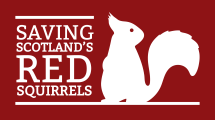…restoration areas, National Parks and National Nature Reserves Consideration should also be given to connectivity of optimal red squirrel habitat by including a sufficient proportion of native conifers in native woodland planting plans to support red squirrel populations, particularly in red squirrel priority areas. (c) Keilidh Ewan Below is a selection of questions from the consultation that I feel are… […]
Read More…
…interior boasts a soft lining of mosses, leaves and grasses. Breeding dreys tend to be fairly large, around the size of a football, and are most often situated in a forked branch, supported against the trunk, around 6 -12m above the ground. Watch out for squirrels carrying large mouthfuls soft lining materials, as they prepare their dreys to provide a… […]
Read More…
…protected species’ places of refuge in a development situation. Please see their website page ‘Standing advice for planning consultations – Red S quirrels’for specific information and guidance. Further advice and links can be found on the NatureScot website surroundingred squirrels and licensing. When enquiring about a planning application, certain information will prove useful. We recommend finding the planning application number… […]
Read More…
…in cage-traps according to best practice guidelines, and then dispatch the animal in the most humane way possible. All staff and volunteers participating in grey squirrel control are fully trained and must follow a strict protocol. Our management methods are designed to ensure public safety, and minimising any animal distress is uppermost in our consideration. The methods we have adopted… […]
Read More…
A non-native species is a species that has been introduced to an area where it doesn’t naturally occur. Most of these are harmless but some threaten native species. These are called invasive non-native species (INNS). INNS have been identified as one of the top causes of global biodiversity loss. In Scotland, one of the most prominent INNS is the grey… […]
Read More…
…red and grey squirrels in the event of a disease outbreak. We recommend an anti-viral solution such as Virkon-S. Squirrel sightings also have an important role to play in monitoring distribution changes over time and assessing areas where both red and grey squirrels come into close proximity. Sightings of both species can be reported through our website at https://scottishsquirrels.org.uk/squirrel-sightings/. And… […]
Read More…
…and inclement winter weather. An abundance of natural wonders are associated with springtime and as for many other species, is when birthing and nurturing young become a priority for red squirrels. Watching red squirrels is always rewarding and there are behaviours specific to this time of year to look out for. Mating Mating behaviour may have begun as early… […]
Read More…
…I was able to initiate things very easily by making the Gatehouse Squirrel Group a project under a pre-existing local charity/company with an environmental slant (Gatehouse Development Initiative). I simply presented the GDI committee with a one-page constitution and that was that. This meant I had a Treasurer and a bank account from day one. ” There are two structures… […]
Read More…
…staggering 94% decline in native water vole populations? The American skunk-cabbage plant does actually smell as bad as a skunk…. White butterburr was imported as a garden ornamental from mainland Europe and SW Asia and escaped into the wild. What is an Invasive Species? There are around 2,000 non-native plants and animals in the UK, these non-native species… […]
Read More…
